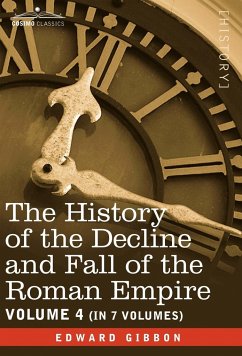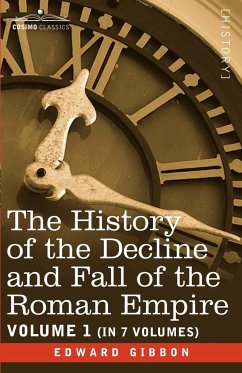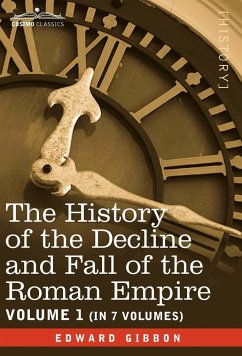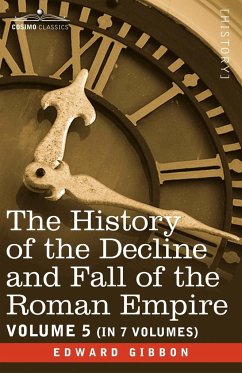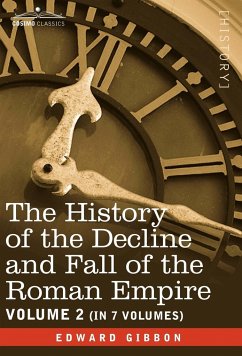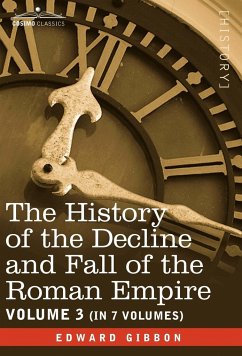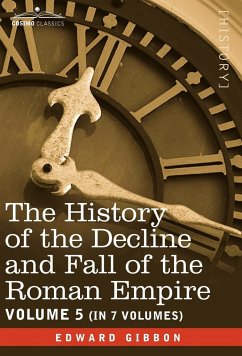The History of the Decline and Fall of the Roman Empire is Edward Gibbon's magnum opus, written and published over a 13-year period beginning in 1776. It not only chronicles the events of the downfall starting with the end of the rule of Marcus Aurelius, but proposes a theory as to why Rome collapsed: the populace, Gibbon theorizes, lost its moral fortitude, its militaristic will, and its sense of civic duty. History is considered a classic in world literature, and Gibbon is sometimes called the first "modern historian" for his insistence upon using primary sources for his research. Many scholars today still use his highly regarded work as reference. In this fourth of seven volumes, readers will find Chapter 36 ("Total Extinction of the Western Empire") through Chapter 44 ("Idea of the Roman Jurisprudence"), which cover the rule and death of Emperor Maximus; the invasion of the Vandals; the reigns of Majorian, Ricimer, Leo, Anthemius, Olybrius, Julius Nepos, Glycerius, Flavius Orestes, and Augustulus; the extinction of the Western Roman Empire; the decay of the Roman Spirit; the rule of Odoacer over Italy; the origin and development of monastic life; the conversion of the Goths, Vandals, Burgundians, and Lombards; the persecution of the Jews in Spain; and the rule of barbarian kings over the lands formerly under Roman control. Chapter 39 begins a concentration on the Eastern Roman Empire, starting with Theodoric of the Osthrogoths, and the volume continues with Justinian I; Belisarius's invasion of Africa; histories of the Gepidae, the Lombards, and the Sclavonians; the deaths of both Belisarius and Justinian; and an overview of Roman law. English parliamentarian and historian EDWARD GIBBON (1737-1794) attended Magdelan College, Oxford for 14 months before his father sent him to Lausanne, Switzerland, where he continued his education. He published Essai sur l'Étude de la Littérature (1761) and other autobiographical works, including Mémoire Justificatif pour servir de Réponse à l'Exposé, etc. de la Cour de France (1779).

